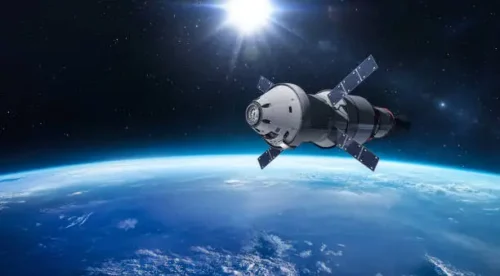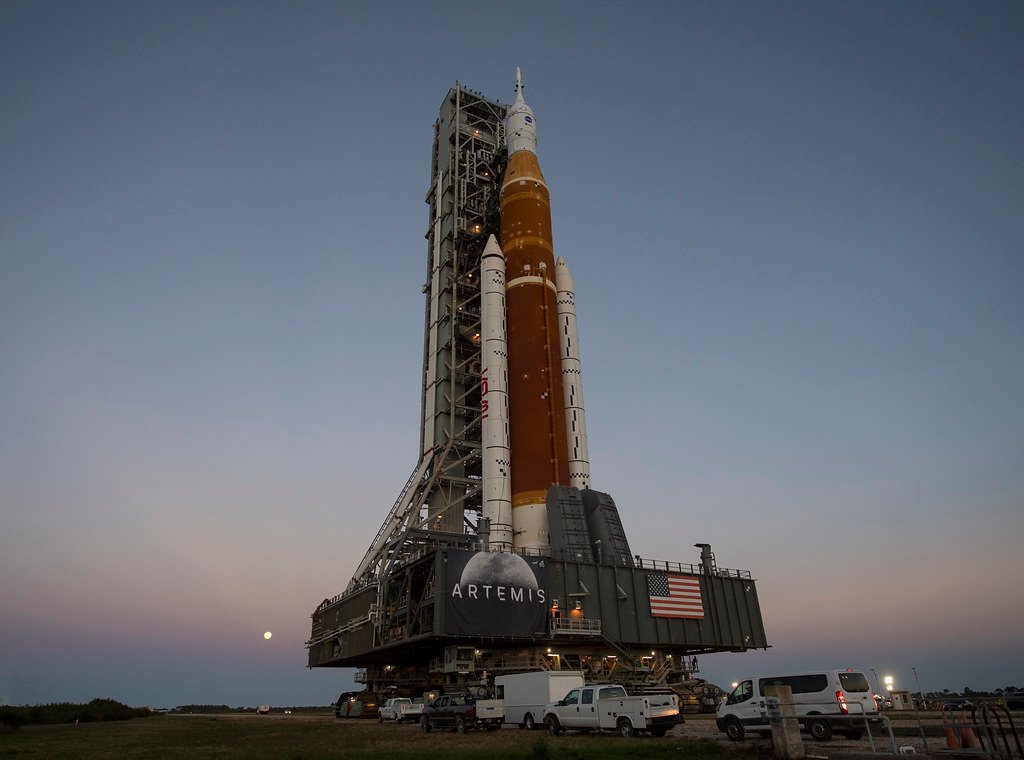Rocket propulsion has come a long way since its earliest military applications. From the terrifying V-2 rockets of World War II to SpaceX’s reusable Falcon rockets, the technology behind space travel has evolved dramatically. In this article, we will trace the key milestones that shaped modern rocketry and explore where the future is headed.
Table of Contents
The V-2 Rocket: Birth of Modern Rockets
The V-2 rocket (Vergeltungswaffe 2), developed by Nazi Germany in the 1940s, was the world’s first long-range guided ballistic missile. Designed by Wernher von Braun, it introduced several key innovations:
- Liquid-fueled engines based on ethanol and liquid oxygen. A curios thing is that the ethanol was produced from fermented potatoes, grains and sugar beets.
- Supersonic speeds: it was able to reach about 5.700 km/h and capable to reach an altitude of approx 100km, which made the V2 the first artificial object to enter space.
- Inertial guidance systems based on gyroscopes, accelerometers and mechanical computer. There were no human controller or radio guide.
Although built for destruction, the V-2 became the foundation for post-war rocket programs in both the U.S. and the Soviet Union.

The Rocket Space Race Era
After World War II, the space race era began. Between 1950s–60s there was a period of intense competition between United States and Soviet Union, the Cold War. It began with the Soviet launch of Sputnik 1, the world’s first artificial satellite, in 1957. It was a shocking moment that spurred the U.S. to accelerate its own space efforts. Another important key milestone was related to Yuri Gagarin’s, the first human to reach space in 1961. After that U.S., worried about being in the second place of this ambitious race, were able to achieve a milestone which created a gap between them and Soviet Union from that point onwards, the Apollo 11 Moon landing in 1969.
This part of the Cold War produced many benefits for the space industry, with particular attention to rocket development. Below we can summarize two of the main achievement in terms of rockets:
The R-7 Semyorka (Soviet Union) was the world’s first intercontinental ballistic missile, developed by the Soviet Union in the 1950s under Sergei Korolev’s leadership. Originally designed as a nuclear delivery system, it went down in history as the launch vehicle for Sputnik 1 in 1957 — the first artificial satellite — and later for launching Yuri Gagarin, the first human in space, aboard Vostok 1 in 1961.
On the right, the R-7’s distinctive design, with its core stage and boosters, became the foundation for the famous Soyuz rocket family, still in use today. It marked a major leap in rocketry, symbolizing Soviet innovation and shaping the course of the Space Race.
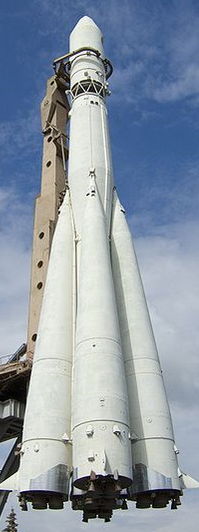
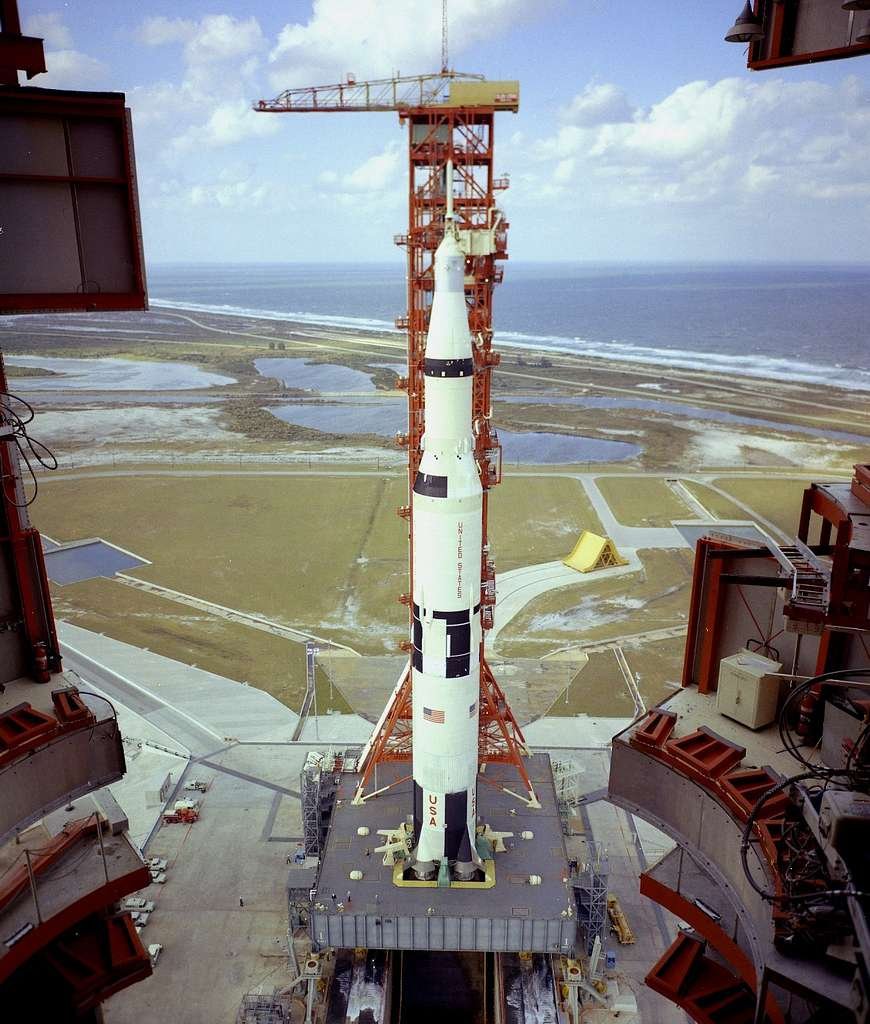
The Saturn V (USA) was one of the largest and most powerful rocket ever built, developed by NASA in the 1960s under the guidance of Wernher von Braun. With a height of 111 meters (363 feet), it was designed specifically for the Apollo program, particularly to send astronauts to the Moon. First launched in 1967 (uncrewed) and famously used for the Apollo 11 Moon landing in 1969, Saturn V had an unmatched record: it flew 13 times without a single catastrophic failure.
On the left, the Saturn V with its three-stage design, it could lift about 118,000 kg (130 tons) into low Earth orbit. Beyond its sheer size, Saturn V became a symbol of American ambition, technological achievement, and the triumph of the Space Race.
Key advances included multi-stage designs, better fuel efficiency, and greater payload capacities.
Both the R-7 and Saturn V marked key advances that shaped modern spaceflight:
Multi-stage designs: Instead of a single massive rocket, both used multiple stages that were jettisoned as fuel was spent, making launches more efficient by shedding weight progressively. This concept, first proven on the R-7, became essential for reaching orbit and beyond.
Propulsion & fuel efficiency: While the R-7 used kerosene and liquid oxygen, Saturn V combined kerosene and Liquid Oxygen (LOX) in its first stage but switched to liquid hydrogen and LOX in upper stages, allowing much higher energy efficiency, crucial for lunar missions.
Greater payload capacity: R-7, initially built for warheads, adapted to lift satellites and crewed capsules like Vostok 1. Saturn V, by contrast, was purpose-built for massive payloads, able to carry over 118,000 kg to low Earth orbit and send around 43,500 kg (50 tons) to the Moon.
The Shuttle Era: Reusable Rocket
The Space Shuttle, officially called the Space Transportation System (STS), was NASA’s revolutionary reusable spacecraft, operating from 1981 to 2011. Unlike traditional rockets, it combined a winged orbiter, two solid rocket boosters, and an external fuel tank, allowing it to carry large crews (up to seven astronauts) and hefty payloads into low Earth orbit. Its design enabled not only satellite deployment but also in-orbit repairs — the most famous and incredible missions were the repairing activity for the Hubble Space Telescope and the assembly and servicing of the International Space Station (ISS).
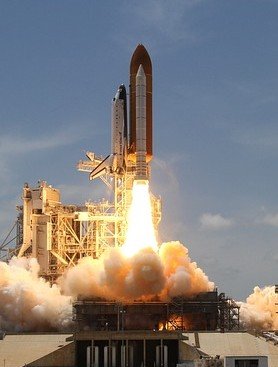
Key innovations included its reusable thermal protection system, robotic Canadarm, and sophisticated avionics. The Shuttle became a symbol of U.S. space leadership but also faced major challenges, including the devastating losses of Challenger (1986) and Columbia (2003), which reshaped NASA’s safety culture.
The Space Shuttle marked the first major attempt at re-usability. But why this beautiful machine, which on paper it was supposed to improve the costs of space missions, was retired?
Huge and Complex maintenance
After every flight, the Shuttle required extremely intensive inspections, repairs, and part replacements — especially for the delicate thermal protection system (the famous black tiles) and the main engines, which practically had to be disassembled and overhauled.
High operational costs
The Shuttle program was designed with the idea of having lot of flights per year (around 50 launches!) to spread out the costs, but in reality, only 4–5 flights happened annually. Each mission cost, on average, between $450 million and $1.5 billion — much more than originally estimated.
Safety and reliability issues
After the Challenger and Columbia disasters, it became clear that the Shuttle needed improvements in terms of safe and reliability. NASA made improvements which gave rise to safety further costs.
In 2000s, NASA and the U.S. government decided to focus on smaller, more cost-effective vehicles and to develop partnerships with private companies (like SpaceX, Boeing, etc.) for cargo and crew flights. The retirement of the Shuttle in 2011 marked this shift in approach.
Soyuz Rocket: The Workhorse After the Space Shuttle
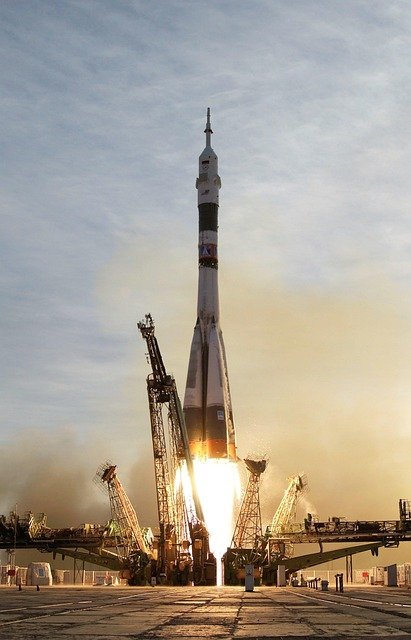
After the Space Shuttle was retired in 2011, NASA and other space agencies relied entirely on Russia’s Soyuz spacecraft to transport astronauts and cosmonauts to and from the International Space Station (ISS).
It is clear from the engineering design (see figure on the left) that the Soyuz is a vehicle that descends directly from the R-7 Semyorka rocket.
Design and Structure
The basic Soyuz vehicle is considered a three-stage launcher in Russian terms and is composed of:
- A lower portion consisting of four boosters (first stage) and a central core (second stage).
- An upper portion, consisting of the third stage, payload adapter and payload fairing.
- Liquid oxygen and kerosene are used as propellants in all three Soyuz stages.
Reusable rocket or not?
Incredibly, the rocket was not reusable. Only certain parts of the rocket, like the launch pad system, can be reused; but spacecraft and rocket itself are expendable. This was in contrast to the partially reusable Shuttle, which aimed (but often struggled) to reduce costs through reusability.
But why Soyuz? Cost and Reliability
Surprisingly, despite being single-use, the Soyuz became the go-to system after the Shuttle because of two key factors:
- Simple and efficient design: the Soyuz is a compact vehicle, based on time-tested technology, free of unnecessary complexity or sophisticated systems that made the Shuttle expensive to maintain. Fewer parts and simpler systems generates a lower maintenance effort and lower preparation costs.
- Lower operational costs
Even though each Soyuz is discarded after a mission, the production and launch costs for an entire vehicle were still lower than the huge, complex Space Shuttle:
- A single Shuttle mission typically cost $450–1,500 million.
- A seat on a Soyuz (which carries 3 people) cost about $70–80 million per astronaut in the post-Shuttle years.
An Unmatched Launch Record
Throughout history, more than 1,500 launches have been made with Soyuz launchers to orbit satellites for telecommunications, Earth observation, weather, and scientific missions, as well as for human flights. This unbeatable record has cemented Soyuz as one of the most successful and enduring launch systems in history.
New Space Rocket generation
SpaceX disrupted the industry in the 2010s by perfecting reusable rockets:
- Falcon 9: First orbital-class rocket with reusable first stage, dramatically lowering launch costs.
- Falcon Heavy: Capable of lifting heavy payloads with partial reusability.
- Starship (in development): A fully reusable system intended for interplanetary missions.
SpaceX’s innovations are setting new standards for cost, reliability, and access to space.
Future Trends in Rocket Propulsion
After retiring the Space Shuttle in 2011, NASA found itself at a crossroads. It needed reliable ways to reach low Earth orbit (LEO), service the ISS, and eventually push beyond toward the Moon and Mars. Here’s how the strategy evolved and why NASA turned to commercial launchers and new heavy-lift systems.
Why Move Away from Soyuz?
While Soyuz provided reliable ISS access after the Shuttle’s retirement, relying on Russia was not a long-term solution for NASA. The U.S. needed:
- Independent crew launch capability from U.S. soil.
- Lower launch costs.
- Vehicles capable of carrying larger payloads and supporting deep-space exploration, not just LEO.
Falcon 9 and Falcon Heavy: A Commercial Revolution
NASA turned to SpaceX’s Falcon rockets, which brought key advantages:
Reusability breakthrough
Falcon 9’s first stage is reusable — a game-changer that slashes launch costs compared to expendable rockets like Soyuz, Atlas V, or Delta IV.
Dramatically lower costs
Falcon 9 launches cargo or crew at roughly $50–70 million per mission, far cheaper than the Shuttle’s $450+ million or traditional government rockets. Falcon Heavy, with three Falcon 9 cores, provides much higher payload capacity (up to ~64 metric tons to LEO) at lower cost per kilogram than NASA’s in-house systems.
Commercial innovation
SpaceX’s rapid development cycles, competitive pricing, and regular launch cadence made them NASA’s go-to partner for resupply missions (Cargo Dragon) and crew transport (Crew Dragon).
The NASA’s Space Launch System
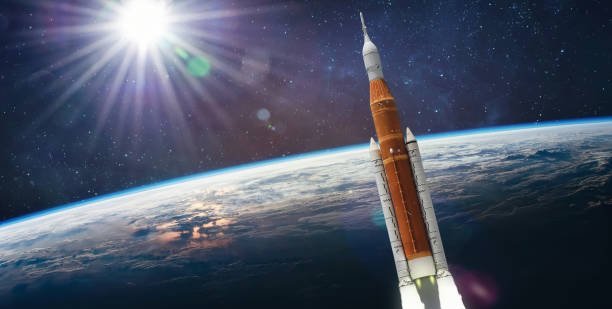
At the same time, NASA developed the Space Launch System (SLS), designed for deep-space missions beyond LEO, including the Artemis program to return astronauts to the Moon.
Based on Shuttle and Saturn V heritage, the SLS provides:
- solid rocket boosters and liquid-fueled core stage.
- Massive payload capacity: up to 95–130 metric tons to LEO, far surpassing Falcon Heavy.
- Focused on launching the Orion spacecraft and lunar/Gateway components.
Why not rely only on commercial rockets? NASA wanted a government-owned, heavy-lift system dedicated to Moon and Mars exploration, not just reliant on private sector launchers.
Starship: The Next Frontier
NASA also awarded contracts to SpaceX’s Starship system for the Artemis lunar lander and future missions. Starship promises:
- Fully reusable two-stage system.
- Massive payload capacity (over 100 metric tons to orbit).
- Rapid turnaround, scalability, and very low cost per kilogram.
Starship could reshape spaceflight by making large-scale human and cargo missions to the Moon, Mars, and beyond far more affordable.

NASA plan for space exploration
NASA idea is to use SLS to launch astronauts from Earth through the Orion capsule and to carry Orion to lunar orbit. Meanwhile, Starship will be launched separately and pre-positioned in lunar orbit. Once Orion arrives, astronauts transfer from Orion to Starship in lunar orbit. Then, it will be possible to use Starship as a lunar lander: it takes the crew down to the Moon’s surface and back up to orbit after the mission.
Future rocket propulsion improvements
Since the post-war period, huge steps forward have been made in the space field, and there are still little-explored technologies that could be game changers for the future, such as:
- Methane-fueled engines: engines like SpaceX’s Raptor use liquid methan (CH₄) and liquid oxygen (LOX) instead of more common kerosen and hydrogen. This will improve performance (methane offers better specific impulse with respect to kerosene, we will deeply analyze what does it mean in future articles) and easier refueling on Mars (methane can potentially be produced on Mars using local resources)
- Ion propulsion: Uses electric fields to accelerate ions; super-efficient, but very low thrust. Great for long-duration deep-space missions.
- Hall-effect thrusters: A type of electric propulsion using magnetic fields; often used on satellites for station-keeping and some interplanetary missions.
- Solar sails: Giant, lightweight sails pushed by sunlight (photon pressure); no propellant needed, but acceleration is very slow.
- Nuclear thermal propulsion (NTP): Uses a nuclear reactor to superheat hydrogen propellant; much higher efficiency (Isp) than chemical rockets, promising for crewed Mars missions.
- Nuclear electric propulsion (NEP): A nuclear reactor generates electricity to power electric thrusters (like ion engines); ideal for heavy cargo and deep-space missions.
I hope this article may help you to get an idea of the current and future technologies for rocket propulsion. In future articles, we will analyze deeply every propulsion type in order to understand how the space exploration sector will grow up in such a brilliant way.
Excited about the future of rocket propulsion? Subscribe to our newsletter for more deep dives into space technology!
